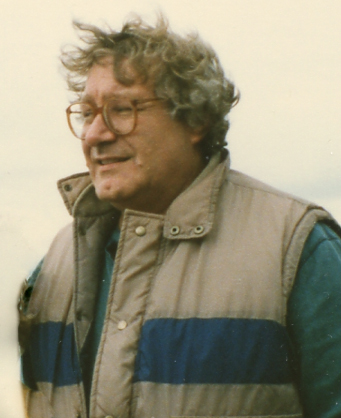
| Home Page | About the Artist | Paintings | Drawings | Reliefs | Sculptures | Prints | Series | Slide shows | Links | Contacts |
 |
David Haigh |
| Canadian-British Artist | |
| 1936 - 2003 |
Series
Many of David's works were done around a common theme or idea. These have been referenced on these pages; the works can also be found in this catalog under their media types, e.g. under Paintings.
To see the items under each series, click on the series name or the sample illustration
|
8 items |
||
|
The control of fire may have been the first and most
important of human achievements. Probably even before they cooked with it,
our ancestors used it for warmth, for protection, and for the hardening of
wooden implements. Some 500,000 years ago, the Pithecanthropi of
Peking seem to have learned to maintain fire which had been naturally
ignited. Remains have been discovered of prehistoric fires which were kept
burning continuously for thousands of years. Only much later, other
proto-humans discovered how to start fire as well.
|
||
|
8 items |
||
| Many brilliantly coloured and intriguingly formed serpents and scorpions contain in their bodies, glands filled with poisonous liquids. By a bite or a sting, they introduce a toxin into hapless victims, or into creatures that mean them harm. | ||
|
13 items |
||
| Remains of the earliest civilizations on our planet date back some five thousand years. The cathedrals and shrines of prehistory speak eloquently of the persistent human search for meaning and for the understanding and the control of the forces and spirits which shape the world. We have learned recently that many such, among them Stonehenge, were astronomical observatories. Over centuries, men used them to track the relentless and largely regular motions of the sun, moon and stars. | ||
|
20 items |
||
| A curtain is raised slightly, an enigmatic face peers out at passers-by on the street below, then quickly and quietly recedes from view. | ||
|
7 items |
||
|
The story of Gilgamesh is told on twelve stone tablets found in Nineveh, in the ruins of the library of Ashurbanipal, a 7th century king of Assyria. Gilgamesh, a great king, is two-thirds god and one-third human. His best friend is Enkidu, a wild man who has learned the joys of civilization. When Enkidu is wounded and dies, Gilgamesh ponders his own mortality. He undertakes a long and perilous journey to the end of the world to meet Utnapishtim and his wife, the only humans to survive a huge flood because they had been warned by a god to build a great boat. In the end, the gods granted them eternal life. Because he cannot stay awake for days, Gilgamesh forfeits the right to immortality. As compensation, Utnapishtim offers him a secret plant that will make him young again. Gilgamesh plucks it from the bottom of the sea. But while he sleeps on his way back to Uruk, a snake slithers up and eats the plant (which is why snakes shed their skin). Gilgamesh falls on his knees and weeps. |
||
|
9 items |
||
| The constructions evoke the shape and texture of the complex machinery of our contemporary society. Although this series is subtitled R3 to R9, it incorporates works outside this range. | ||
|
15 items |
||
| At one point, depressed and disappointed in what seemed to him to be general indifference to his work, David announced that he would paint only sunsets, landscapes and pretty scenery. For a while, he stuck to his resolution. The result was the vivid "Romantic Sunset" series. | ||
|
32 items |
||
| A series of pencil sketches, mostly (but not exclusively) produced in London. | ||
|
18 items |
||
| In world mythology, serpents rule the underworld, protect great treasure and possess secret knowledge. They represent both good and evil. Because a snake sheds its old skin and generates a new one, it was a popular representation of deity, of magical powers, and of regeneration and life. Early religion used the serpent as a phallic symbol and as a symbol of the mother goddess. Often it guarded the fruit of a sacred tree. In classical Greece, the serpent became associated with the rod of Ascelpius, the god of healing, and it remains a symbol of medicine still. | ||
|
11 items |
||
| The earliest evidence of proto-human and human biological and cultural evolution is buried deep in caves, under mounds and in old monuments. Painstakingly, archeologists tease away layers of fragments and garbage to reveal snippets of foundations, hearths, fires, tool making sites, altars, and hunting grounds. The earliest art galleries and oldest settlements and cities are covered with earth which both hides and protects them. We are intrigued, and try to understand who we are by contemplating where we came from. | ||